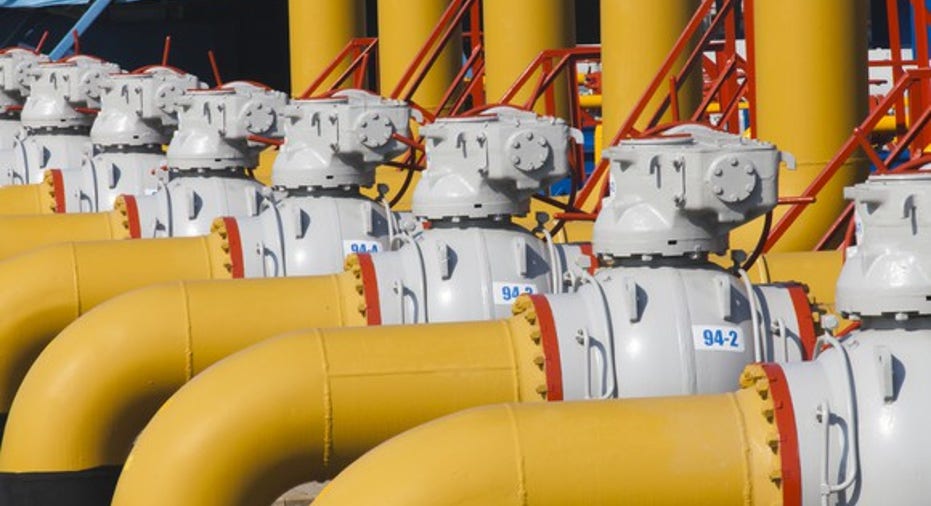5 Things Holly Energy Partners Management Wants You to Know

Holly Energy Partners' (NYSE: HEP) fourth-quarter results were exactly what the company needed, a significant boost in top- and bottom-line results that showed the benefits of its recent acquisitions. What's even more surprising is that this strong showing came when there were a couple of operational hiccups. This bodes well for 2017, but management sees some opportunities to make the company even stronger.
Here are several quotes from Holly Energy Partners' most recent conference call that summarize what management thought of its results and what it hopes to get out of the company in the future.
Image source: Getty Images.
2016 was a good year
Holly Energy Partners had an active 2016 with numerous acquisitions. So the conference call started off with Holly Energy Partners and HollyFrontier (NYSE: HFC) CEO George Damiris highlighting these moves and what they meant for the bottom line:
Payout still chugging along
On top of those impressive growth numbers, Holly Energy Partners was alsoable to keep its long-standing distribution growth streak alive. Even more encouraging, CFO Richard Voliva emphasized that its payout was still within the company's cash-generating ability:
A distribution coverage ratio of 1.07 times is in the good-but-not-great range. It's enough to cover current payments, but it leaves little wiggle room if there is a down quarter for some unforeseen reason. Also, it means that the company isn't retaining much cash to reinvest in the business. So many other master limited partnerships painted themselves into a corner with low coverage ratios and being wholly reliant on outside capital to pay for growth. That led to either distribution cuts or some other drastic corporate changes. Ideally, management will look to improve this ratio to 1.2 times or better, a range at which it has kept its payout before.
Slowing demand? Not really
One stain on the company's clean results for the fourth quarter was a decline in pipeline volumes at some of its assets. Before it became a lingering issue, Voliva wanted to clarify that the drop was temporary, resulting mostly from downtime at HollyFrontier's refinery rather than a more systemic supply or demand issue.
As this downtime spills over into the first quarter of 2017, investors should have that in mind when it's time to report earnings.
Troubles with its newest asset?
What's noticeable on both Holly Energy Partners' and HollyFrontier's recent results is that the latter's Woods Cross Refinery in Salt Lake City has been running well below its nameplate capacity. This is a critical asset for Holly Energy Partners because it just acquired some of the refining units at Woods Cross. On HollyFrontier's conference call, some analysts asked what was going on at the facility. Here's Damiris response:
So this issue hits Holly Energy Partners in two ways: Not only does it impact refining volumes at the refining units it purchased but it also means the company is realizing lower volumes in its pipeline. The specific pipeline in question is co-owned with Plains-All American Pipeline, and Plains is the operator. So getting that pipe on line is a little out of Holly Energy Partners' hands.
Structural change coming?
As the MLP corporate structure became popular several years ago, many were set up as general partners or limited partnerships, giving the general partner a small equity interest in the overall business but got outsize amounts of the overall cash flow through what were called incentive distribution rights. These were basically management fees paid to the parent company.
Over the past year or two, though, many companies have come to find that maintaining this relationship has led to higher cost of capital, and therefore it's getting harder to invest in new opportunities. As a result, others have been abandoning this model by trading in their incentive distribution rights for a larger equity interest in the business.
On HollyFrontier's most recent conference call, Damiris was asked if the company was exploring similar options now that those incentive distribution rights are starting to become prohibitively expensive for the partnership. Here's what he had to say:
With Holly Energy Partners' current slate of growth options already looking a little dry, getting the company's cost of capital lower would be a great step toward opening new investment opportunities. Shedding its current corporate strucutre could be the salve that makes it possible.
10 stocks we like better than Holly Energy PartnersWhen investing geniuses David and Tom Gardner have a stock tip, it can pay to listen. After all, the newsletter they have run for over a decade, Motley Fool Stock Advisor, has tripled the market.*
David and Tom just revealed what they believe are the 10 best stocks for investors to buy right now... and Holly Energy Partners wasn't one of them! That's right -- they think these 10 stocks are even better buys.
Click here to learn about these picks!
*Stock Advisor returns as of February 6, 2017
Tyler Crowe has no position in any stocks mentioned. The Motley Fool has no position in any of the stocks mentioned. The Motley Fool has a disclosure policy.